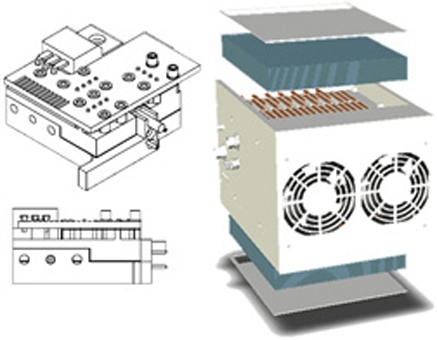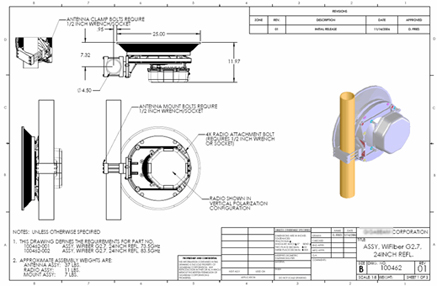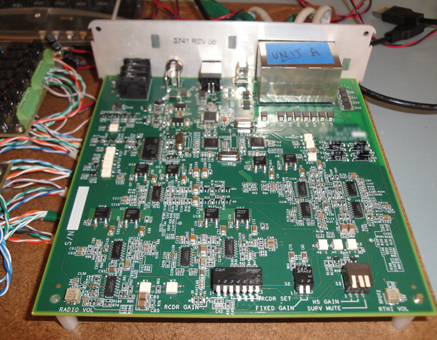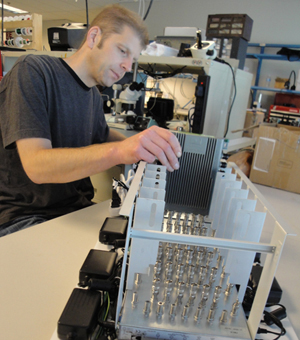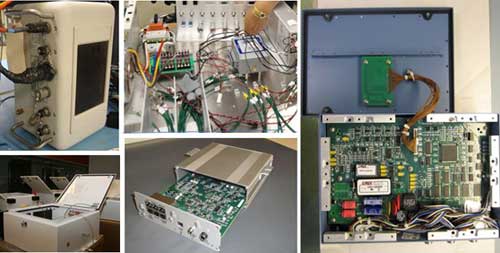-
Phase 1
Product DefinitionPhase 1 requires clear identification of the idea, goals and objectives, and timeline. This includes determining feasibility of the idea through research, including performance requirements and possible regulations that may apply. Using our 20+ years of experience in developing solutions, we will advise you of our findings and develop a product performance specification that identifies specific architectural, detailed design, functional, and regulatory requirements to ensure your product is engineered and manufactured to meet or exceed your goals. We will also use this information to create a product development plan with cost information to make your product a reality.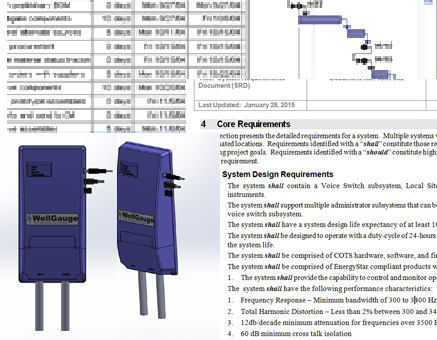
-
Phase 2
Concept DesignPhase 2 begins with development of ideas, which in turn becomes concept sketches (CAD models) illustrating potential solutions. Our Concept solution will include high-level, inter-connect diagrams, a preliminary Bill of Materials (BOM), analysis of materials and components, regulatory compliance matrix, and branding to meet your objectives. This phase culminates in a Concept Review and update of documents incorporating your comments and feedback. -
Phase 3
Detail DesignPhase 3 begins detailed engineering and design. Building on the Concept Design sketches, engineering incorporates details such as architectural, functional, and compliance requirements into the design and detailed CAD models and Bill of Materials (BOM). The detailed design phase is where the majority of the engineering effort is spent in developing the product.The Mechanical Engineer will develop 3D CAD models of the physical parts, focusing on the electrical interconnect, product assembly steps, manufacturing requirements, and material considerations. Various analyses, such as thermal, structural, and weight, may be conducted to ensure the design will perform as expected. These analyses identify design problems up front, allowing them to be addressed early in the design phase and reducing the need for multiple design iterations. The Hardware Engineer will develop the circuit designs to meet the functional product requirements. Circuit analyses may be performed to determine timing constraints, component values, and layout requirements. A schematic will be created to capture the design information.PCB designers will create the circuit board design starting with a preliminary layout of components on the circuit board(s) and developing libraries if necessary as well as ensuring form fit with the design. PCB designers will route connections defined by netlist, industry standards, and customer's instructions (some customers are involved in this level of detail). After completing the board routing, the designer generates the required outputs for the manufacturing package using the design database. Multiple reviews are held with the customer to assure that all design requirements are addressed.Supply Chain begins sourcing sheet metal, cables, and components as the BOM is developed and continues to analyze materials and components for availability. Compliance begins developing the Test Plan, and coordinating testing and required test equipment needed for testing. The technical writer will begin working with mechanical, hardware, and compliance engineers to develop a User Guide that includes installation and operation procedures required as part of the Compliance documentation package.The Compliance Engineer consults with engineers throughout development, begins developing the Test Plan, and coordinating testing and required test equipment needed for testing. The technical writer will begin working with the Compliance Engineer to develop a User Guide that includes installation and operation procedures required as part of the Compliance documentation package.The engineering documentation is the output of this phase and will be used to build prototypes of the product to verify the design. Documents include mechanical drawings, PCB data packages, compliance Test Plans and Test Procedures, and manuals such as Installation and User Guides. All of the documentation and original design files are considered your intellectual property. You will receive a complete package of both the drawings (in PDF format) and the native source files at the completion of the project. -
Phase 4
PrototypePhase 4 begins with turning innovative engineered solid models into a partial or fully functional prototype unit. This can be achieved using any one of the SLA processes or simply having prototype metal or plastics manufactured. The intent of the prototype is to validate the design intent. Prototypes can also be utilized as a valuable marketing tool to launch an early product at a trade show or to gain budgetary support internally. In our prototyping environment, technicians, mechanical and hardware engineers will build the prototype to verify the design, conduct a "fit" check, validate/ update assembly instructions, and verify functionality. Our Compliance Engineers will then use the prototypes for early compliance pre-scan testing at a certified test lab. Based on verification and test results, the engineering documents will be updated for use in the pilot build. -
Phase 5
Regulatory CompliancePhase 5 prepares all documentation, equipment, and coordinates testing at a certified test laboratory. The Compliance Engineer will ensure that all design documents, such as assembly drawings, schematics, and bill or materials (BOMs) are complete; test plans and test procedures are complete; and manuals that detail installation, setup, and operation procedures, including warnings and cautions are complete and ready for review. A certified Lab will review all of the above documentation and our Compliance Engineer will support the review as needed. Manuals and test plans and procedures will be used throughout testing by both the Lab and our Compliance Engineer. The Compliance Engineer will also ensure that prototypes and ancillary support equipment is identified and provided to the Lab according to schedule. Throughout this phase we will provide testing, logistical, and troubleshooting support as necessary for a successful testing program at the testing laboratory. This will include monitoring the testing as required, responding to the proposed lab requirements, and providing functional support required at the lab during testing. -
Phase 6
NPIPhase 6 is a pre-production transition phase to ensure that the product is designed for manufacturability and assembly (DFMA), and to ensure all product-related documentation and supply chain information has been formally transferred to Configuration Management (CM). We begin with a review of all documentation in an effort to minimize assembly costs, maximize manufacturability, and plan for testing, tooling, and material purchasing. This includes qualifying contract manufacturers, component sourcing, documentation control, and change management control and test fixture development. After identifying improvements and updating documentation, we validate the production process through a pilot run where we begin transitioning your product from pilot (First Article) to full-scale, low volume production (LVP). -
Phase 7
Pilot ProductionPhase 7 is a pre-production transition phase to ensure that both the product Design for Manufacturability and Assembly (DFMA) criteria has been met, and also to ensure all product related documentation and supply chain information has been formally transferred to Configuration Management (CM). During this transition phase, our NPI team will transition a product from prototype to full-scale, low volume, pilot ready builds. This includes qualifying contract manufacturers, supply chain sourcing, continued DFMA studies, documentation control, and change management control and test fixture development. This phase is especially important for those transitioning a product or portion of a product for overseas production. Again, all Intellectual Property (IP) is a deliverable to our clients. -
Phase 8
Low Volume Production (LVP)Phase 8 begins the low volume production (LVP) phase where we assemble, build, verify, and test multiple units. Materials are sourced, received, and verified before kitting and storing for production. As units are assembled, they are tracked and verified at critical points in the production cycle that culminate in a final visual check and functional test. Our process incorporates Quality Assurance (QA) throughout the build process to ensure all specified requirements are met before a unit is packed in protective material and shipped to our customers. Our technicians are certified, and we have incorporated our Counterfeit Electronics Part Policy into our ISO Quality System.
